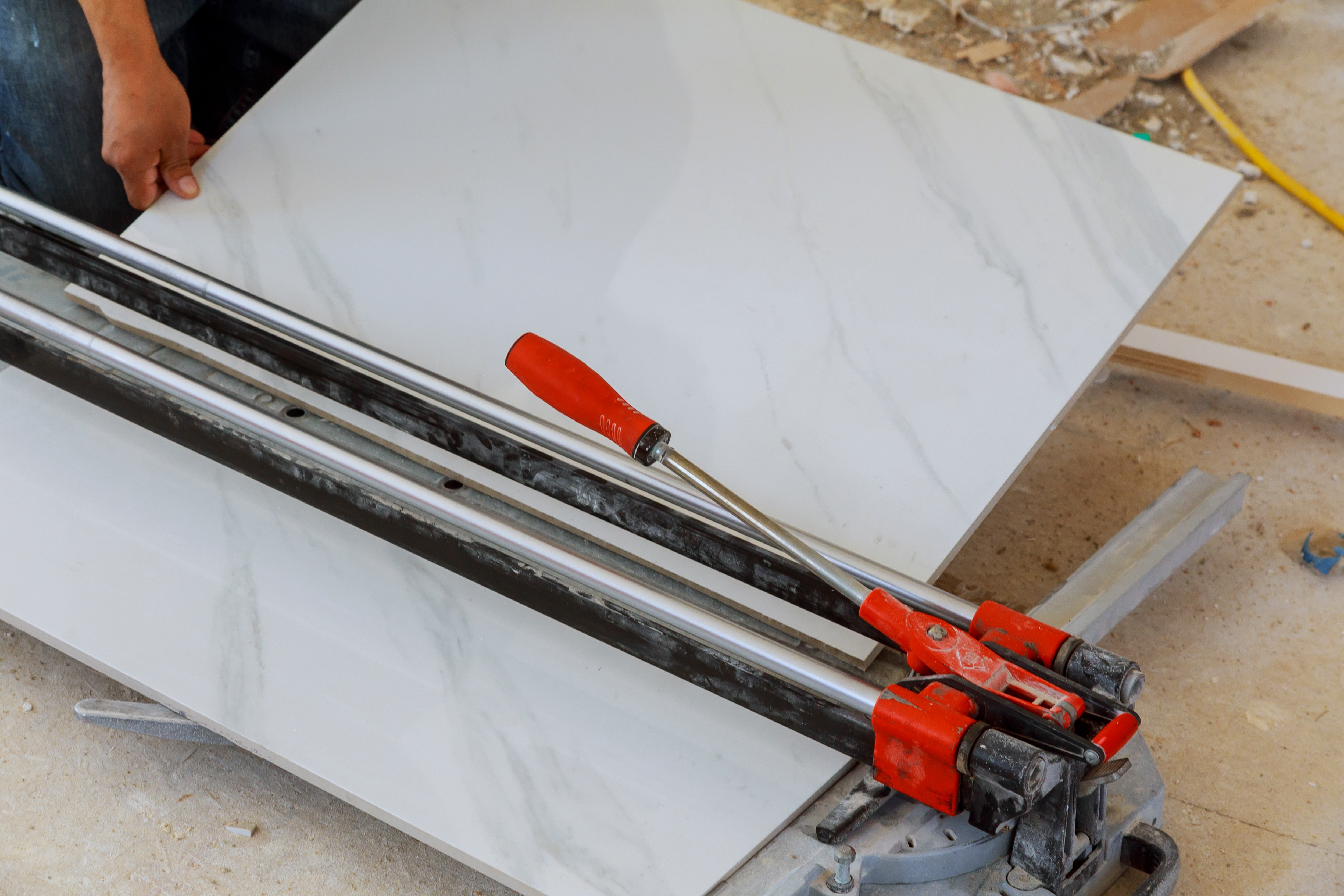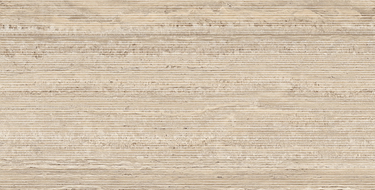
Cutting tiles is a fundamental task when laying tiles. The procedure is not as complicated as it might seem. You can cut tiles using both simple and more advanced tools. The most important thing is precision and adopting the right technique to prevent damage to the tiles.
What will you learn from this article?
We have good news for you — you can cut tiles on your own. This way, you can complete your bathroom, kitchen, or hallway project with great accuracy. From this article, you will learn:
How to cut tiles on your own.
What to use to cut tiles.
How to cut a ceramic tile without a machine.
How to cut tiles so they don't crack.
What types of tile cuts are there.
A few valuable tips for proper tile cutting
Cutting tiles requires precision and the use of appropriate tools. The work should be carried out calmly and without haste. It is important to measure the ceramic tiles to cut a shape that fits the area being tiled. Remember — a tile that is too big can still be trimmed precisely, but tiles that are too small will only be suitable for disposal.
When selecting tools or blades for precise tile cutting, consider the size, type, and thickness of the tiles. Use every cutting tool with care, slowly, and don't change speed, especially when using a tile saw. Use tools carefully, without strong pressure. Too much force will cause the surface of the tile to crack. On the other hand, too little force will make it impossible to cut the tiles.
Cutting thick tiles requires an appropriate approach. Start by scoring one edge of the tile, then move to the other end. This will allow for effective distribution of pressure, and the tile will break exactly where you want it to.
What tiles should not be cut?
Unfortunately, the above tips do not apply to some types of tiles. They are not even suitable for making openings. This concerns tiles with a fancy shape, designed to measure. Their form must remain complete if you want to achieve a consistent composition in the interior.
Types of tile cuts
Ceramic tile cutting can be carried out in different ways. Types of cuts are divided into ordinary and special. Below, we present the most popular cuts that work very well for porcelain stoneware, glazed porcelain stoneware, and wall tiles.
Ordinary cuts
Straight or perpendicular cuts, also known as orthogonal — mount the tile by leaning it against a square. Use a side stop where you want to make the cut to a specific dimension.
45-degree bevel cuts — they can only be made on square tiles. Apply the same principle as above, but instead of making cuts on the sides, do it on the corners. With a cutting machine at your disposal, you will make precise cuts.
Inclined cuts from 0 to 90 degrees — the most popular cut. If you are not yet familiar with how a bathroom renovation looks step by step, you will quickly realize that walls and floors have different inclinations. This means that ceramic tile cutting should be done using varied angles to achieve a uniform, even surface.
Special cuts
This type of cut is performed, among others, around water drain openings and at square corners. They allow you to meet high design requirements. There is no manual tile cutting here, but rather with the use of electric saws and a saw with a beveling function, e.g., equipped with a diamond drill.
The most popular special cuts are:
narrow strips,
square and round holes,
volumetric cutting,
beveling at columns or the corners of bathtubs.
What to use to cut tiles — popular tools
You can cut tiles using many tools, just like vinyl panels. Check what tools are useful for cutting floor panels, and what to use to cut a ceramic tile.
The easiest way to start cutting tiles is by using a glass cutter. This inexpensive tool is very simple to use. We say "start" because it is not intended for cutting tiles, but only for scoring them. This makes it easier to break the tiles at designated spots.
A much more advanced tool is a tile cutter. Its operation resembles that of a guillotine. A tile placed inside is subjected to precise cutting with a swift motion. A more convenient option is an electric tile cutter which is useful for cutting thick and hard tiles without much effort. It accurately defines the cutting line and is more precise than the manual version.
Tile cutting with an electric saw involves the use of a diamond blade. It is versatile, ensuring the making of holes and cuts in various tiling materials. Regardless of the tile's thickness, a cut can be made with great precision.
Besides the tools mentioned above, to accurately carry out the cutting of porcelain stoneware tiles, you will also need a measuring tape for measuring dimensions, and a pencil or tile marker to mark the cutting line.

Home methods for cutting ceramic tiles
For many people, it may be surprising to find out how much tiling costs in 2025, as well as having tiles laid by a professional. If you are a DIY enthusiast or want to try finishing your apartment on your own, below we present home methods for cutting ceramic tiles. Using the best practices, chips and cracks will not appear on the tiles.
Cutting tiles with a glass cutter
You have a wide choice of tools you can use to cut tiles. The simplest tools are a glass cutter or tile nippers.
You can scratch the tile surface along the marked line using a glass cutter, then break the material with a brisk motion. If any irregularities or protruding fragments appear on the edges, use a carbide file to remove them.
Tile nippers are useful for precisely breaking off scored fragments of tiles. You can smooth the processed material with an angle grinder with a diamond blade.
Cutting porcelain stoneware with a tile cutter
Mark the exact cutting line on the tile, then insert the tile into the cutter, commonly known as a guillotine. The device is equipped with a cutting wheel that enables making a straight, shallow score. The final step is to press the cutter's foot against the tile surface. Then manually break the tile along the scratch line.
A manual tile cutter may cause edges not to be as even as needed. To achieve a perfect straight line, use an angle grinder with a diamond blade.
Cutting tiles using a saw with a diamond blade
The most professional and at the same time the most expensive method of cutting tiles is using a saw with a diamond blade. You can choose between two models:
with a fixed blade, which requires manually moving the tile along the cutting edge,
with a moving blade, where the tile remains stationary during cutting, and you control the moving blade.
Each cutting blade is water-cooled, so no dust is generated during the tile cutting process. This is particularly important when work is conducted inside the building rather than in a home workshop. A saw with a diamond blade allows even the most complicated bathroom or kitchen project to be realized. You can bevel tile edges at a 45-degree angle, allowing them to meet at corners. This way, the interior will have perfectly laid floor and wall tiles without large gaps.
Things to remember when cutting tiles
Cutting and laying tiles requires proper precision and good planning. However, it doesn't mean you can't do it on your own. Before you start cutting tiles, invest in appropriate tiling equipment for material processing. Make every cut with precision, spend enough time on measurements, and you will avoid unattractive chips.
The easiest tiles to cut are those with the least amount of patterns. Cuts on the surface are less visible, and thus, a satisfying effect is achieved. Avoid cutting decorations and tiles with a closed form. They are not meant for this.
Always precede the cutting of porcelain stoneware with the choice of the appropriate cutting type, suited to the result you want to achieve. There are many methods, making it possible to plan ceramic tile cutting with great precision. Of course, if you have any doubts about whether you can handle cutting tiles, you can use the help of an experienced finishing team. However, after reading this article, you now at least theoretically know how to cut tiles without chipping, so it's worth trying your hand at it.























